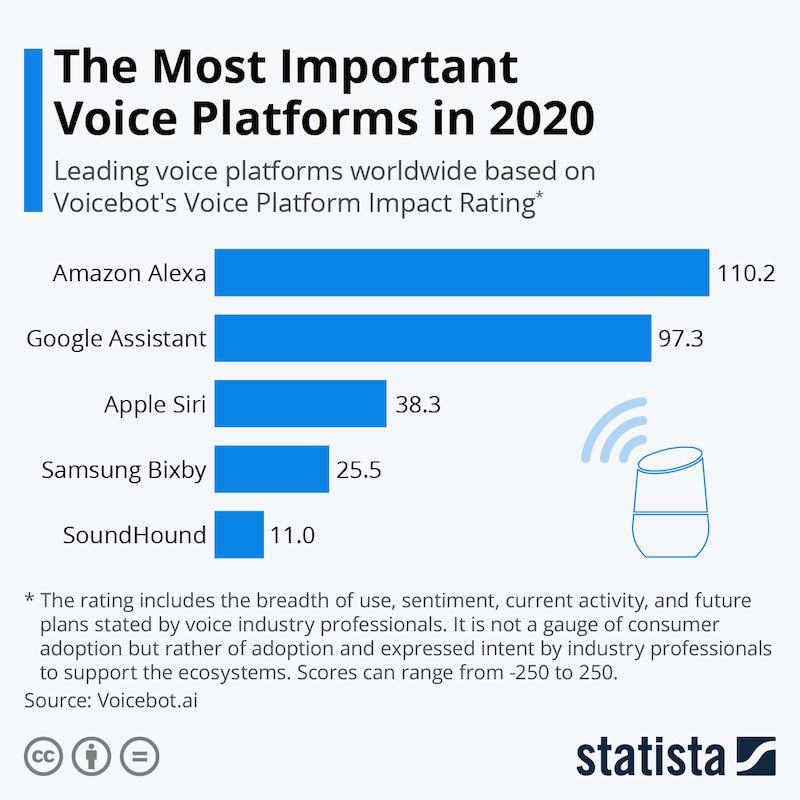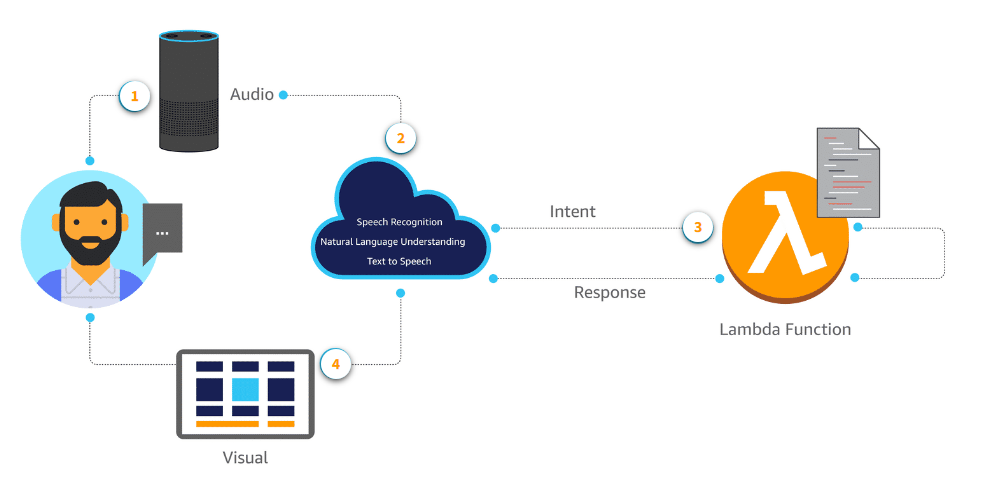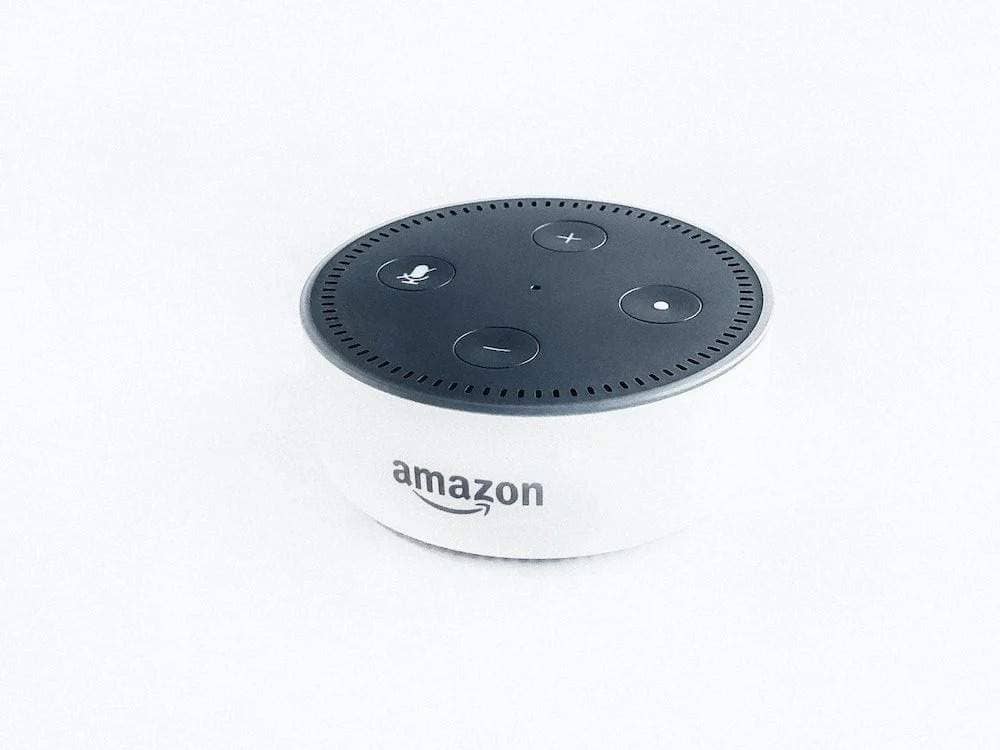Introduction

Consumers are embracing voice technology at unprecedented levels, and businesses must remain up to competition, or risk missing out. Many companies see more and more customers turning to voice assistance. But what they do not understand is just how easily a customer behavior change happens. Since the smartphone, the adoption of consumer voice assistants has been faster than any product.
If you fully grasp how, where, and why your customers are using voice, you can uncover new links between your company and their needs — and provide crucial assistance. Since voice tech is so fresh, the challenge is to leverage data from various sources for accurate, actionable insights. You can then develop personalized, targeted, and frictionless experiences when people really need them.
With the speed at which this transition is happening, marketers need to start experimenting in this space. At its core however, it's no different from any other marketing campaign.
In this post, we try to break it down for you.
Current voice assistants adoption

Consumer awareness and adoption of voice assistants are still in its infancy, far from reaching a mature state, especially compared to all other existing technologies around us. Yet, there's no question about the future of voice tech. It will continue to push and change customer behavior, and businesses must plan and adapt accordingly. Search, ad tech, content, and e-commerce are getting disrupted industry-wide as customers change how they communicate with brands through voice technology. Consumers are talking, and listening is a good thing.
Smart speaker adoption has moved very quickly. Within only four years, 1 out of every 4 US adults use those voice-enabled intelligent speakers. This was two years ago in 2018. The pace with which its adoption has been growing; it is safe to say it would have achieved 50% market penetration right now. Although smart speakers were a catalyst for voice adoption, they are not the only drivers of growth. Far more customers have voice-enabled smartphones than smart speakers. Lately, a surge in adoption is seen in voice assistants in cars, watches, headphones, televisions, appliances, toilets, and many other devices.
In a study conducted by PwC, just 10% of respondents were unfamiliar with voice-enabled products and apps. Out of the 90% who were familiar, a vast majority used a voice assistant (72 percent). The voice assistant adoption is majorly driven by the young generation, households with kids and families with a net income of over $100k.
Although the youngest customers who were surveyed (the 18 to 24-year-olds) embrace voice technology faster than their older peers, they are way more likely not to use the voice assistants frequently. It's the 25-49-year-olds that use them and are significantly more likely to be declared power users.
Voice assistants in marketing

Either Siri or Alexa or Google Assistance, all these digital assistants can boost marketing by deeply personalizing processes and offering enhanced customer insights to marketers. The introduction of these voice assistants not just improves the customer experience, but by allowing voice-driven chatbots also help in upselling and cross-selling to the audience while making the whole experience exclusive.
Communications has always been essential for building trust. Voice assistants have a conversational approach that aids in creating successful interaction and a sort of emotional connection. Voice assistants can break down barriers for specially-abled people, especially in situations where auditory, physical, or cognitive growth is impaired. Voice is particularly useful for visually disabled people. People, both young and elderly, really enjoy talking to voice assistants, highlighting the intimacy that can be formed via voice.

Marketers care about smart speakers but focus primarily on smartphones as a tool for voice interaction with customers. A study done by VoiceBot.ai demonstrated that 87% of marketers viewed, using a voice app on smartphones is essential compared to 72% who saw marketing via smart speakers and in the car critical.
Brand advertisers are positive about voice assistants as communication platforms in the coming times. In the same survey, it was found that nearly 90% of marketers believe voice assistants will be a significant marketing channel in the next 3-5 years. 25% of them thought voice assistants would be an incredibly critical channel.

This enthusiasm is not limited to branding and advertising alone. Marketers also expect voice commerce to boom. Sixty-nine percent are incredibly positive about voice shopping opportunities that involve product discovery behaviors, while 62 percent express similar feelings about shopping through the voice-first channel.
Marketing and voice assistant fusion is not just about ‘what’ was launched in this new space, but also about what platforms marketers prefer. A considerable majority of voice app releases were Alexa skills. Nearly 83 percent of voice assistant marketers have already launched an Alexa skill, compared to 47 percent who went with Google Assistant based integrations.

The fact that Alexa has stayed two years longer in the market than Google Assistant definitely helps it. It is also worth noting that Amazon has an aggressive brand development outreach to encourage platform participation and has even offered proactive support to marketers in specific instances. Google too has made some efforts, but far less.
The most crucial thing all voice apps need is content. Content suited for voice applications doesn't exist today. So voice-first content creation becomes a significant factor in any new project. The brand or company promoting the voice app should take on this responsibility, or it should fall to a creative agency.
Voice assistants in business
This innovation is suitable not only for personal needs but also for the requirements of a successful business.
One of the most meaningful business benefits of voice assistants is the automated processes that they introduce in the business setup. Such assistants never stop working through the use of new AI technologies and deep learning. Processing information, reviewing data, and keeping vital processes up-to-date are some of the functions this voice technology can provide. Voice assistants are responsible for recognizing critical deadlines, schedules, and coordinating for events and meetings. They can make any business way more flexible and automated.
According to a Capgeminin Research Institute survey, voice assistants' capacity to communicate with companies and organizations reflects the increased usage and comfort with voice assistants. Enterprise voice assistant architecture like VERA 2.0 can empower businesses to offer their users natural voice experiences while communicating with business systems such as IT service management, operations management, business management, IT functions, office management, and HR management. No industry is an exception to the smart and natural communication experiences when using voice assistants.
Giants like NewYork Life Insurance have already taken the plunge in voice assistants tech. Their twelve thousand agents will use Alexa to access policy-related information, coordinate, and plan for meetings. Even JP Morgan & Co is getting the help of voice assistants like Alexa to provide their clients with research and analytics reports. Capital One Financial Corp. is the first bank in the US to provide Alexa services to its clients to help them via voice experiences.
From managing HR & IT to data analytics, increasing user personalization, executive & sales assistance, and boosting productivity, the voice assistants can do it all.
ADDITIONAL READING
How do voice assistants work?
Voice assistants respond to voice commands and provide specific details about their queries.

Voice assistants are based on the Automatic Speech Recognition and Processing system, also known as ASR. These systems first record speech and then break it down into distinct sounds or groups of different sounds(phonemes), which gets further translated into text. A phoneme not to be confused with syllable is a universal human speech recognition measurement unit. Phoneme interpretation provides accurate results, unlike other forms of word decoding; it evaluates words taking into account the context limits.
This all begins with a wake word, like Hey Siri or Ok Google or Alexa. The voice assistant starts whenever it hears the wake word. This means that it will now begin listening and recording your queries or command. It waits for a moment to figure that the question is complete. Then the voice assistant sends the registered message to its ASR database over the Internet.
The Natural Language Understanding(NLU) comprehends the intent of the customer's request here and then those blocks of information are forwarded to the resolver, where they are finally transformed into text for further action, such as command or dictation. The most amazing thing to note here is that all of these data get processed without any human intervention. It gets done by AI. And because of tremendous advancements in machine learning, the error rates are increasingly becoming lower and lower.
Nowadays, voice assistants can process purchase orders, respond to questions, perform tasks like playing music, or make a quick phone call.
Voice assistants and privacy
All major voice assistants, including those from Google, Amazon, Apple, and Samsung, as well as Microsoft, hire people for analyzing end-user speech info. Recently, Bloomberg posted on Amazon's staff analyzing audio samples from Alexa-spoken orders. The team had access to location information and can find a customer's home address in some cases. That's because the team seems to have access to latitude and longitude coordinates associated with a voice clip that can be pasted into Google Maps to link it to find where it originated. In a survey of voice assistant users conducted by Microsoft, fifty-two percent said their personal information or data was not safe and secure, and 24 percent said they didn't know how it was being used.

It demonstrates that, even though voice tech is such a transformative piece of tech, there are still some creases like privacy concerns that must be ironed out by looking at it from the lens of trust. Businesses and marketers who are considering voice assistants as a growth driver must have to respond, implement feedback, and start creating a foundation of trust. A secure conversational world where users feel at ease is up to today's tech makers.
Voice assistants challenges
- Privacy Issues: The topic of who listens to voice assistant recordings and what they hear became one of last year's most significant controversies faced by voice assistant developers. Data and consumer privacy are essential aspects a voice assistant maker and marketer need to comply with. The user deserves to know that his data is safe, and his privacy is not compromised, otherwise, user adoption is a significant problem.
- Lack of context and ambiguity: Most voice assistants today face the challenge of making the conversation as life-like as possible. Currently, the capability of voice assistants to handle dialogs fluidly is still far from natural. Producing a smooth two-way dialogue while overcoming any interactional ambiguity is going to be a major win for the voice tech.
- Accessibility: In the past, nearly all interfaces involved physical contact. It's not just digital interfaces under glass surfaces that need to be touched, but the physical world around us: door handles, light switches, keyboards, and mouse. Such experiences can be frustrating – or unpleasant – for those with restricted movement skills, and incorporating solutions for voice commands means that more individuals will engage. Voice assistants don't fix these issues; they open new opportunities to communicate with a broader range of users without relying on contact. But we are yet to see significant steps being taken in this direction.






